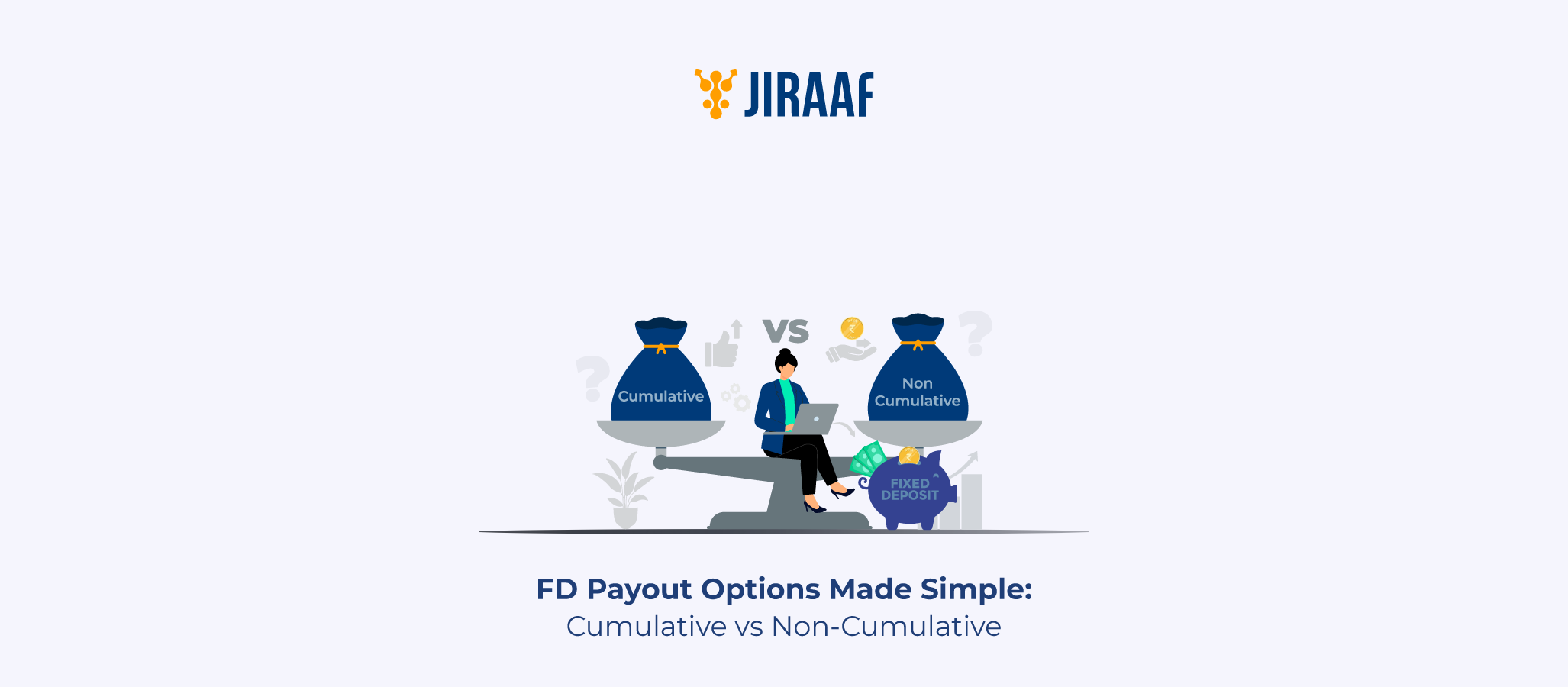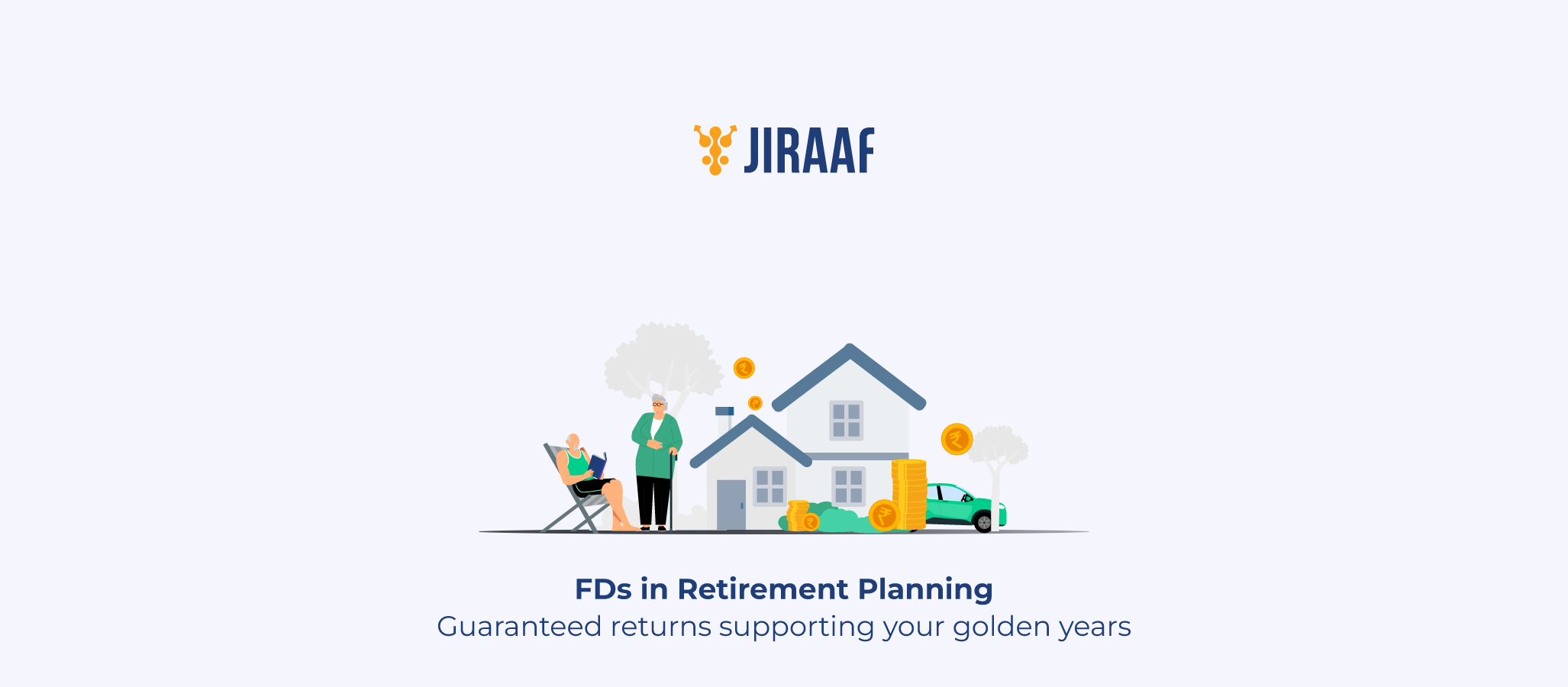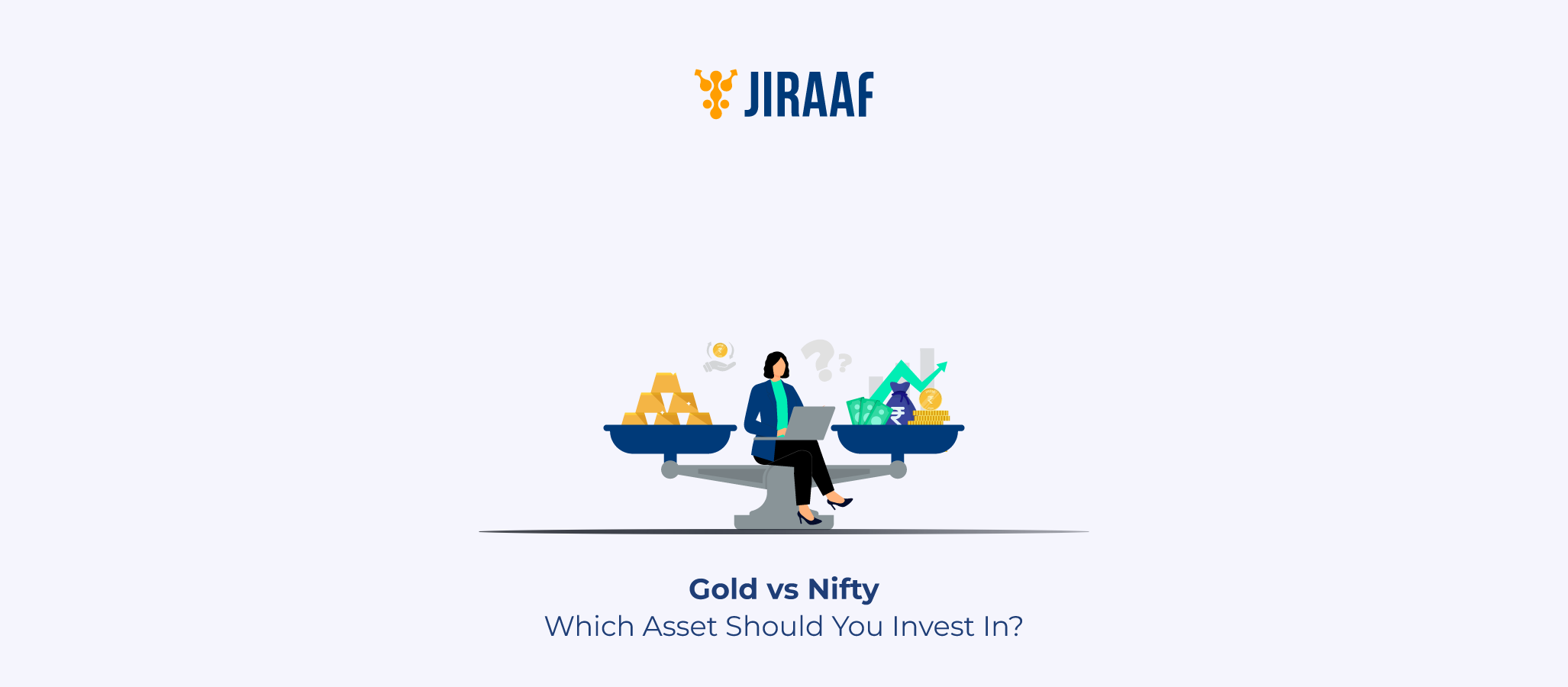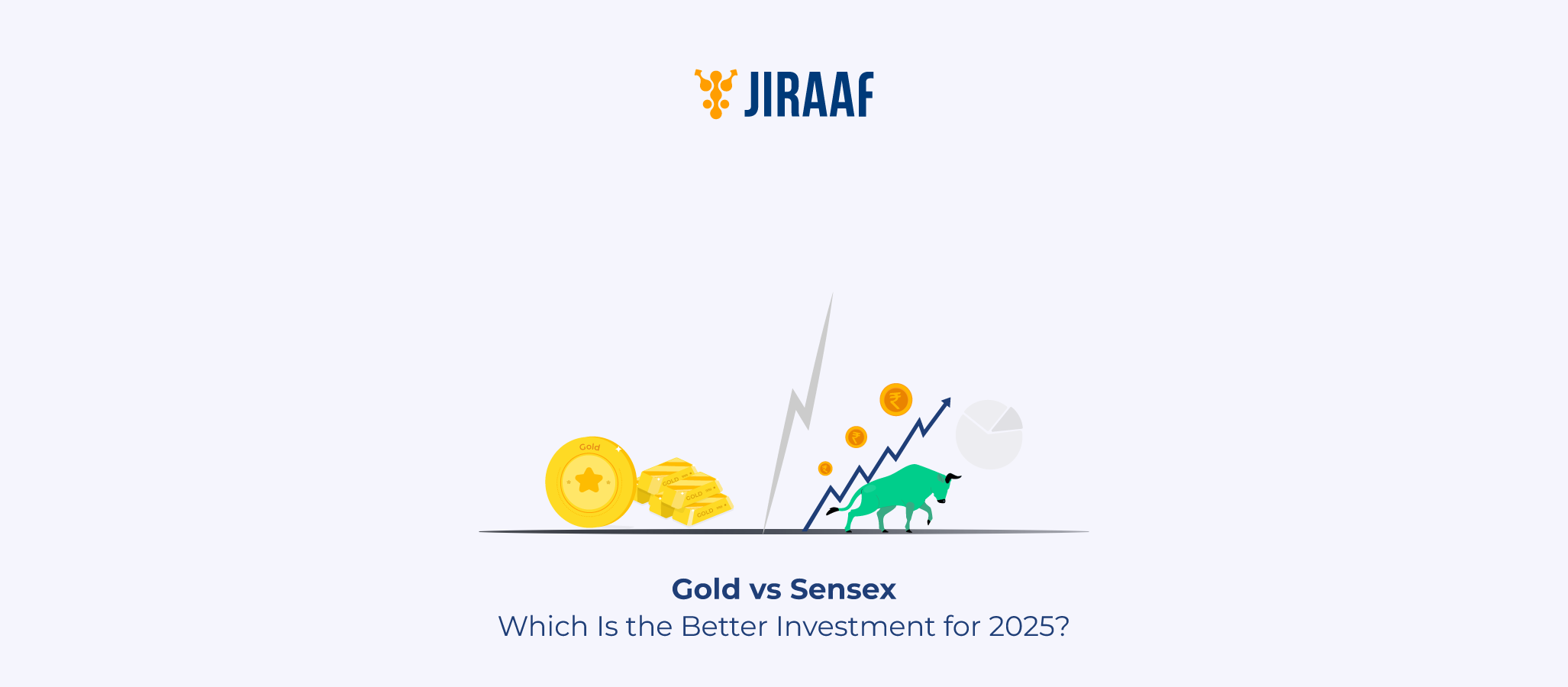When you think of a Fixed Deposit (FD), the first things that usually come to mind are safety, stability, and a steady stream of income. That’s exactly why FDs remain a go-to choice for so many investors.
But here’s something you’ll almost always be asked when opening one: Do you want a cumulative or a non-cumulative FD?
The terms might sound heavy, but the idea is simple. “Cumulative” means the interest keeps getting added to your deposit and paid out together at maturity, giving you a lump sum. “Non-cumulative”, on the other hand, pays interest at regular intervals—monthly, quarterly, or annually—making it ideal for those who want periodic income.
Sounds straightforward, right? But there’s more to them than this. Let’s dive deeper to see how these two options work and which one might suit your financial goals better.
What is a Cumulative FD?
A cumulative FD is a type of fixed deposit where you don’t receive regular interest payouts. Instead, the interest earned on your principal amount gets added back to the deposit, effectively creating a larger base for future interest.
This compounding effect is what makes cumulative FDs attractive—they let your money earn on itself, growing steadily in the background. At maturity, you receive a lump sum that includes both your original investment and all the accumulated interest.
Now that we’ve seen how a cumulative FD grows quietly in the background, let’s look at its counterpart—the non-cumulative FD, designed for those who prefer regular payouts over a lump sum.
What is a Non-Cumulative FD?
A non-cumulative FD is the exact opposite of its cumulative counterpart. Instead of rolling your interest back into the principal, it pays you returns at fixed intervals—monthly, quarterly, or annually—while the principal is returned at maturity.
This makes non-cumulative FDs a smart choice for people who prefer regular income, like retirees or anyone who relies on steady payouts rather than waiting for a lump sum.
Now that we know what cumulative and non-cumulative FD is, let’s place them side by side to understand the key differences more clearly.
Cumulative vs Non-Cumulative FD: Detailed Comparison
Picking between cumulative and non-cumulative FDs can feel tricky at first, but it doesn’t have to be. By laying out the key differences side by side, you’ll be able to see which option aligns better with your financial goals and income needs
| Feature | Cumulative FD | Non-Cumulative FD |
| Interest Payout | Interest is accumulated and paid only at maturity. | Interest is paid out at regular intervals (monthly, quarterly, or annually). |
| Compounding Effect | Benefits from compounding, as interest is reinvested into the principal. | No compounding, since interest is withdrawn periodically. |
| Best For | Investors aiming for long-term wealth growth without needing immediate income. | Investors looking for regular income, like retirees or those depending on payouts. |
| Returns | Typically, higher due to the compounding effect. | Steady but slightly lower compared to cumulative FDs. |
| Liquidity of Earnings | No cash flow until maturity, funds are locked in. | Provides periodic liquidity through interest payouts. |
Now that we’ve compared cumulative and non-cumulative FDs side by side, the next step is to see how they actually work in practice. Walking through a simple example will make the differences crystal clear and help you decide which one fits your financial needs better
Interest Calculation Examples for Both FD Types
Let’s understand this through an example. Imagine you invest ₹1,00,000 in a bond (FD) at an interest rate of 10% for a period of 4 years.
Situation 1: Cumulative FD
Here, the interest of ₹10,000 earned each year is reabsorbed into the deposit. This means the interest itself starts earning interest, creating the compounding effect. At the end of 4 years, the accumulated interest is paid out along with the principal as a lump sum, which will be ₹1,46,410.
Situation 2: Non-Cumulative FD
In this case, the interest isn’t reabsorbed but paid out at fixed intervals. For example, the FD holder would receive ₹5,000 every 6 months. Over 4 years, this adds up to ₹40,000 in periodic interest, and at maturity, the principal of ₹1,00,000 is returned separately.
This comparison highlights the power of compounding in cumulative FDs versus the steady cash flow in non-cumulative FDs. But remember, chasing the bigger lump sum isn’t always the answer instead it’s your financial needs that play a key role. If you need regular income, periodic payouts may serve you better.
To make it easier, let’s explore which FD type suits different investor profiles so you can see where your goals align.
Which FD Type Suits Different Investor Profiles?
Choosing between a cumulative FD and a non-cumulative FD depends on your life stage and financial priorities. Here’s how different investor profiles fit in:
Cumulative FD
- Young professionals: Ideal if you don’t need immediate income and can let compounding grow your wealth.
- Long-term savers: Perfect for goals like buying a house, child’s education, or retirement corpus.
- Tax planners: Helpful for those who want to lock in money and reduce taxable income under 5-year tax-saving FDs.
Non-Cumulative FD
- Retirees: Regular interest payouts act as a steady income stream for daily expenses.
- Homemakers or dependents: Reliable periodic cash flow without touching the principal.
- Conservative investors: Suitable for those who prioritize liquidity and stable returns over compounding.
Now that we’ve matched each FD type with a suitable investor profile, it’s equally important to understand the tax angle. After all, the returns you see on paper aren’t the same as what you take home, and tax treatment can make all the difference in your final gains.
Tax Implications for Cumulative and Non-Cumulative FDs
When it comes to Fixed Deposits, one thing investors often overlook is taxation. No matter how attractive the interest payout looks, what really matters is how much you keep after taxes. Let’s see how it works for both types:
1. Cumulative FD
- Even though you don’t receive regular interest, the income is still considered “earned” every year.
- The bank deducts Tax Deducted at Source (TDS) annually if your interest exceeds the threshold (₹40,000 for individuals, ₹50,000 for senior citizens).
- At maturity, you receive a lump sum, but you must declare the annual accrued interest in your Income Tax Return (ITR).
2. Non-Cumulative FD
- Here, interest is credited to your account at regular intervals (monthly, quarterly, or annually).
- Each payout is taxable in the year you receive it, and TDS applies if it crosses the prescribed limit.
- These payouts are added to your income and taxed as per your slab rate.
Additional pointers
- Interest from both cumulative and non-cumulative FDs is treated as Income from Other Sources.
- It is taxed according to your applicable income tax slab, meaning higher earners face higher tax outgo.
So, while both options offer steady and safe returns, their tax impact might tilt your decision. If you’re in a higher tax bracket, planning around TDS and interest accrual becomes crucial before locking in your money.









